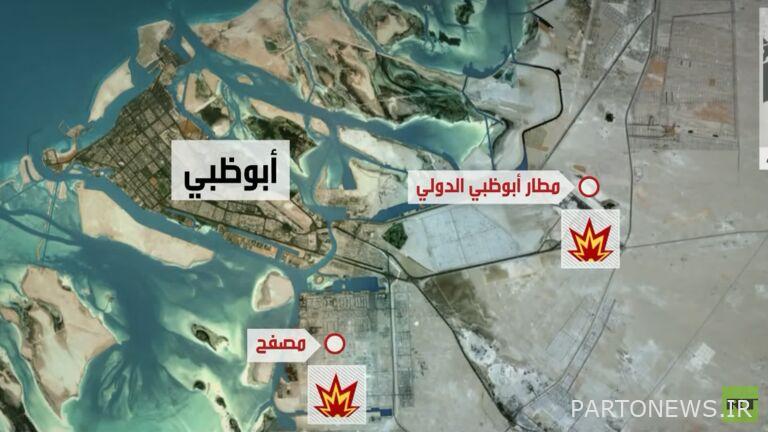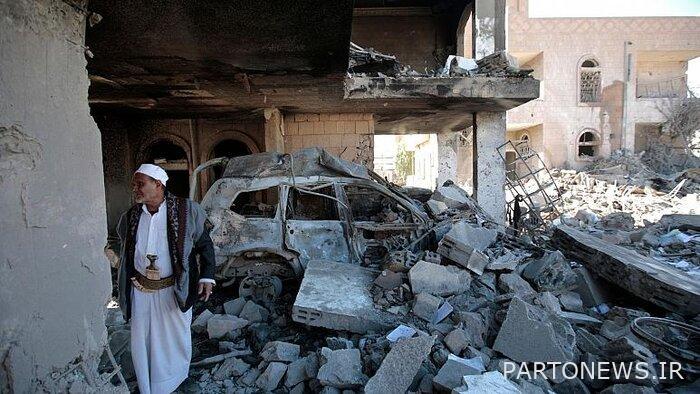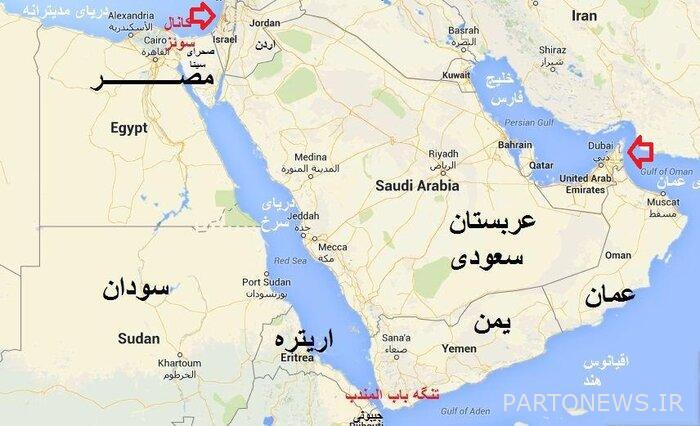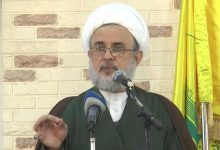Middle East in the first shock waves of 2022

About 28 months after Ansar al-Yamin’s strike on the Aramco oil facility, which shut down a significant portion of Saudi energy production for some time, a sophisticated missile-drone operation disrupted the UAE’s defenses. During the attack on the Saudi oil facilities in Baqiq and Kharis on September 14, 2019, almost half of the Saudi oil production went out of orbit and affected the world markets. Following the attack on the UAE, Reuters reported that oil prices had reached their highest level in seven years and that Brent had crossed the $ 87 mark.
Despite these consequences, many viewed it from a political and military perspective and analyzed its consequences.
Reactions to the Ansarullah attack and analysis of reactions
Following the pre-dawn attack on Monday (January 18th), Yemeni Armed Forces spokesman Yahya Sari announced that his country had successfully launched Operation Storm Yemen in response to increased attacks by the US-Saudi-Emirati aggressor coalition with several missiles and drones. Dubai Airport, Abu Dhabi and the oil refinery in Abu Dhabi “Al-Masfa” and a number of other important and sensitive sites and facilities in the UAE have been targeted.
Al-Mayadin TV reported that the Yemeni army and popular committees attacked the UAE with 20 UAVs and 10 ballistic missiles. Although the UAE has officially stated that it reserves the right to respond to these attacks, the point that many analysts have made is that the UAE’s position is “conservative.” From this perspective, the main targets of Operation Yemeni Storm in Abu Dhabi are a short distance from the important facilities in Dubai, raising concerns among UAE leaders that Ansarullah could easily deal a fatal blow to the UAE economy.
However, the Saudis have fully sided with the UAE in their statement, and the Saudi media has published a large volume of media production in recent days to create space against the Yemeni storm; Including the Okaz newspaper, which quoted the chairman of the Pakistan Ulema Council (one of the main Wahhabi strongholds in the subcontinent) as calling for a serious crackdown on Yemeni Ansarullah.
Complementing this media wave was the attack by Saudi fighter jets on residential areas in the Yemeni capital Sanaa in response to the recent operation. Also on Friday, the first of February, Saudi airstrikes on a prisoner in Saada province killed at least 70 people and left dozens injured.

These events also provided an excuse to repeat the attacks of the Riyadh leaders on Tehran. According to Al-Sharq Al-Awsat, Saudi Deputy Defense Minister Khalid bin Salman claimed that “Saudi Arabia and other countries in the region are trying to keep Yemen as part of the Arab world and ensure that its people enjoy security, stability and development.” “Houthi militias choose terror and destruction and use the Yemeni people as firewood to ignite a plot.”
Although the UAE has officially stated that it reserves the right to respond to these attacks, the point that many analysts have made is that the UAE’s position is “conservative.”Meanwhile, the Saudi newspaper Al-Sharq Al-Awsat spoke a few days before the need for Saudi Arabia to prepare for a comprehensive attack on Yemen.
In addition to such positions by the UAE’s main partner in the war against the Yemeni people led by Riyadh, the Turkish Brotherhood axis and Qatar also described the UAV-missile attack in separate statements condemning and contradicting international law; An approach that many observers have linked to the Brotherhood-centric process of de-escalation with the UAE, including issues such as Ankara’s improved relations with Abu Dhabi in recent months and the UAE’s interest in investing in Turkey.
But in Iraq, the statements of resistance groups such as Hezbollah and Asaeb Ahl al-Haq differed significantly from the official positions of the Baghdad government; Statements written by many Arab and regional media outlets had two main features; The first is to welcome and express satisfaction with the success of the operation and the second is to punish the Yemeni storm.
The approach of the western capitals and Tel Aviv to Monday’s attacks
As for the trans-regional reaction, in addition to the Americans, who in the first reaction from the national security adviser of the administration of “Joe Biden” committed themselves to the security of the UAE and the attacks “terrorist”, the EU, Britain and the UN Secretary General with different strengths and weaknesses Condemned the recent UAV-missile operation.
Among the Western media, the BBC described the US response to the operation as “sharp” and VOA wrote: “The US statement has ‘strongly’ condemned the ‘deadly’ attacks on the Houthis. However, one of the most important topics for analysts was the challenge to Washington and the three European member states of the UN Security Council, which are pursuing nuclear talks with Tehran in Vienna.
On the other hand, the Democratic government of the United States has faced numerous criticisms of regional policies. Republican Sen. Jim Inhaf, a member of the US Congressional Military Committee, tweeted that the Houthi attack on our friends in the UAE once again showed that it was wrong to remove the group from the list of terrorist groups.
The passage of Yemeni drones through the areas where the American and British bases are located and where the Israeli defense force is also hosted on its territory has raised serious questions and doubts about the effectiveness of this base and the defenses in supporting the UAE.Two days after the attacks, the news of Zionist sources about the delivery of new weapons to the UAE was widely reported. The Hebrew-language Yedioth Ahronoth newspaper quoted sources in Tel Aviv as saying that defense systems could be delivered to the UAE and wrote: “The director of the Zionist company” Sky Lock “has confirmed the request of Abu Dhabi leaders to receive anti-UAV shield equipment quickly.
What was the message of the Yemeni storm to the actors of the developments in this country?
After the recent attack by Yemeni forces on the UAE, the Minister of Information of the Sanaa government, Zaifullah al-Shami, wrote on his Twitter page: “With this action, we conveyed the punitive message that we wanted to send to the UAE.” “This attack shows the high level of accuracy and power of the Yemeni forces and their acquisition of strategic deterrent weapons that can target enemy territory in the future,” the Yemeni website Saba Net quoted al-Shami as saying.
“We have already sent a warning message to the UAE that if it does not stop supporting the mercenaries and deploys its forces in Marb, Al-Bayda and Shabwa, we will respond,” said Abdullah Hajar, a political adviser to the Sanaa government. . The UAE did not understand this warning message. Now, if the UAE continues its aggression, it will not be able to withstand our heavy blows in the future.
According to Al-Mayadin website, “Mohammad Al-Bakhiti”, one of the Ansarullah leaders, also said: “We have listed very sensitive targets in the UAE.”
So Ansar al-Qaeda’s missile and drone strike have two options left for the UAE, either to return to its 2019 ceasefire agreement with Ansar al-Islam or to focus on concentrating all its forces in the Yemeni war to strengthen its Saudi ally position.“The recent operation sends a message from Sanaa to Abu Dhabi that Yemen can target the UAE,” said Abdul Bari Atwan, editor-in-chief of the London-based Rai Al-Youm trans-regional newspaper. I predicted a Yemeni invasion of the UAE because of Abu Dhabi’s behavior. The UAE will not be able to withstand such attacks by Yemen.
An excuse for a new wave of media attacks on Iran
Numerous media outlets affiliated with the Saudis, as well as foreign Persian-language media, saw the Yemeni storm operation in Tehran as a decision made in Tehran after the Ansarullah attacks, rather than as a reaction to their aggression.
The most important point that was emphasized by the experts of “Iran International” network in relation to the Ansarullah attacks was that this unexpected and punitive action is a sign of strong dissatisfaction with the Emirati leadership, which instead of gradually withdrawing from the Yemeni conflict, pushed back the Yemeni forces in Shabwa province is looking to control the strategic province of Marb.
According to the network’s experts, this operation can be related to the results of the Iraqi elections, which weakened the axis of resistance and the end of Tehran’s patience in the face of close cooperation between the Israeli regime and the UAE in such an operation and threatening the economy of the southern sheikhdoms.
Beyond these claims, which were made in the form of media analysis, this axis was highlighted in “Iran International” that in the aftermath of the nuclear talks, Tehran will use Ansarullah’s attack on the UAE to show that it can upset the regional equations whenever it wants and Therefore, the Western parties in the Vienna talks must understand the real position and power of the Islamic Republic of Iran.
Al-Sharq al-Awsat wrote in its analytical report on recent events: “Recent operations show that Tehran is confused about the role of the UAE in the fight against Iran’s plan in Yemen.” The attack has a variety of messages, the first of which is addressed to the Biden government, which quickly and without any justification removed the Houthis from the list of terrorists.
The London-based Al-Arab newspaper also claimed in its report: Ansarullah’s attack on the UAE is a message from Iran to the Arab countries on the Persian Gulf and the United States. The content of the message is that Iran is taking steps towards tension; All sides are working to achieve peace in the region through a peaceful solution to the Yemeni crisis or an understanding through negotiations on the nuclear issue. It is now clear that talking about diplomacy and smiling is one thing, and Iran’s military messages are another. Iran wants to create the feeling that it is the only actor that can guarantee the stability of the region or increase the scope of tensions. It is also a message to the United States that it has volatile positions.
On the other hand, some media outlets indirectly covered the consequences of the Yemeni operation for Iran. In Al-Mayadin’s analysis, we read this time: Operation Yemeni Storm targeted four sparrows at the same time; UAE, Israel, Saudi Arabia and the United States.

The media wrote about the consequences of the Yemeni attack on the Zionist regime: It was the second sparrow of Israel. It is true that the UAE and its facilities are now targeted in Dubai and Abu Dhabi, but the consequences of the Yemeni attack on Israel were much more severe than in the UAE. The success of the operation in Abu Dhabi, more than 1,200 kilometers away, has raised Israeli concerns, and the regime is likely to be targeted by Yemenis in the near future. The recent operation has dashed the Israeli regime’s hopes for the UAE as a strategic hub in the Persian Gulf region for an intelligence, security and military confrontation with Iran.
Will the Yemeni storm end in favor of Ansarullah?
Some Emirati and Saudi media outlets claim that the consequences of the recent operation will further affect Ansarullah.
The UAE newspaper Al-Ittihad claims, without mentioning the country’s involvement with the Saudis in the attack on various parts of Yemen: “The strategy of the Houthi group to achieve any change in its interests or to the detriment of the UAE national interests is a mirage.” The terrorist acts of this group have dangerous consequences for international peace and security and the naval movement in the strategic waterways of the region. This requires the international community to fulfill its responsibilities to put an end to the dangers of the Houthi group and to put the group back on the terrorism list.
Arguments and opposing views, however, gained more weight. The London-based trans-regional newspaper Rai Al-Youm described the aftermath of the Yemeni storm as follows: Now, after the Ansarullah missile and drone strike, there are two options left for the UAE. Or it must return to its 2019 ceasefire agreement with Ansarullah. In this case, the UAE must withdraw its affiliated forces from the Shabwa, Marb, and Al-Bayda fronts and return them to their base on the shores of al-Hudaidah and near Bab al-Mandeb. Or the UAE should continue its proxy war in these areas and try to strengthen the position of its Saudi ally by concentrating all its forces in the Yemeni war.
Operation Yemeni Storm targeted four sparrows at the same time; UAE, Israel, Saudi Arabia and the United States.It is not clear which option the UAE leaders will choose. It is difficult for the UAE to leave the Saudi coalition and ignore the ambitions of its military allies in southern Yemen as tensions with Riyadh escalate. But if he chooses this option, Ansarullah will end his attacks. The second option of the UAE is costly because Ansarullah with its retaliatory blows in the depths of the UAE, targets the oil infrastructure and tourism, especially the airports, the facilities of the oil company “Adnok” and so on.
According to Rai Al-Youm, Ansarullah’s attack has shaken all the principles of the conflict and brought the Yemeni war to a new stage, which will be difficult to predict. The occupied territories are about 1,600 kilometers from Sanaa, and Tel Aviv is now terrified because Ansarullah drones and ballistic missiles are likely to target the regime in the future. This unprecedented attack deep into the UAE may lead to a solution to end the Yemeni war. Perhaps this attack will aggravate and increase the scope of the battle and the involvement of other sides, especially the countries of the resistance in this war, as it happened before in Syria.
The Lebanese Al-Ahd website also stated in its report: “The management of the missiles fired at the UAE showed that drones and ballistic missiles have power beyond the highly advanced air systems of the UAE supporters.” Because these missiles and drones have completely crossed the airspace of Saudi Arabia and the UAE. The drones’ passage through areas where US and British bases are located and where they have hosted Israeli defense forces has raised serious questions and doubts about the effectiveness of the base and the defenses in supporting the UAE.
.

